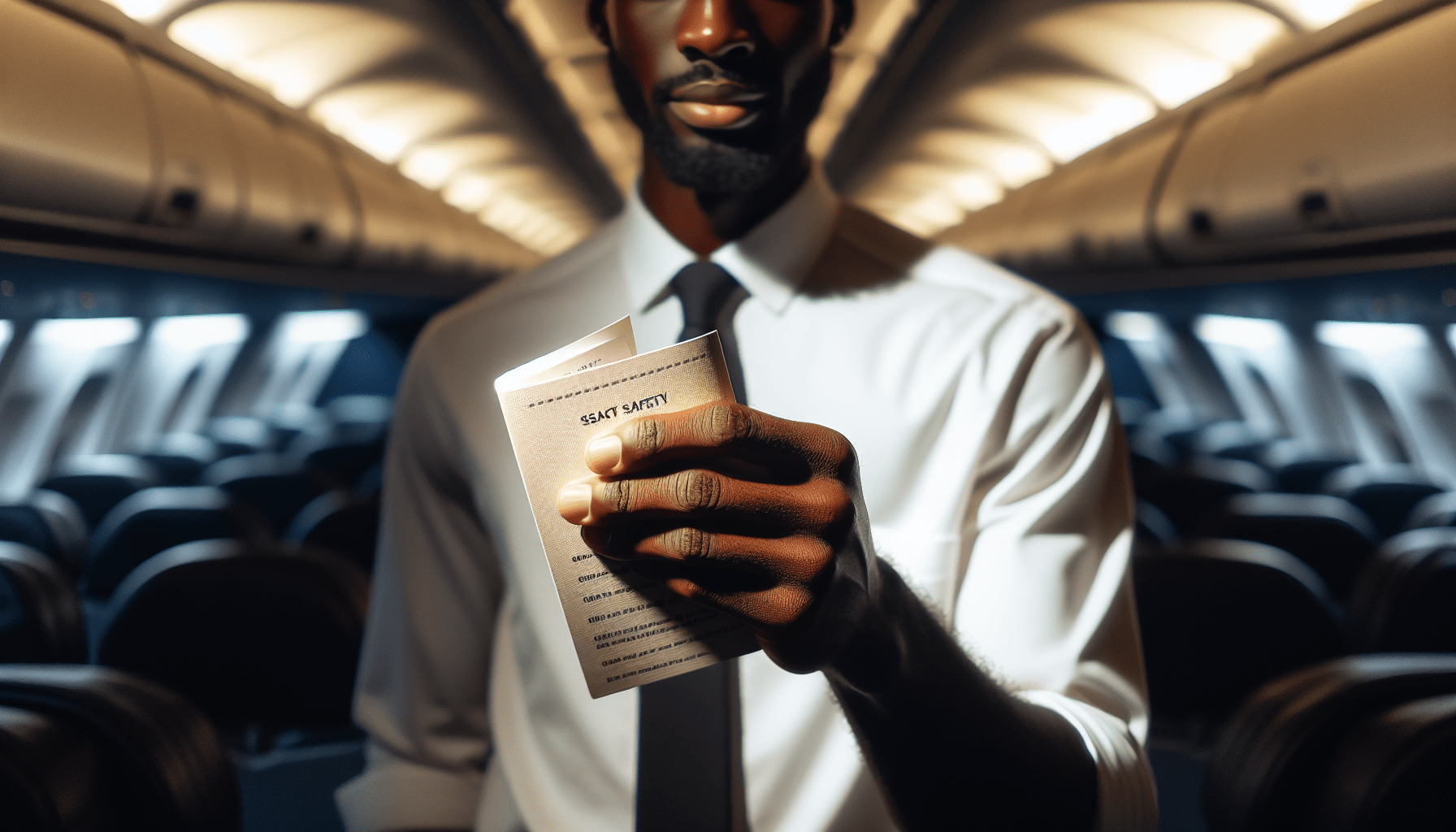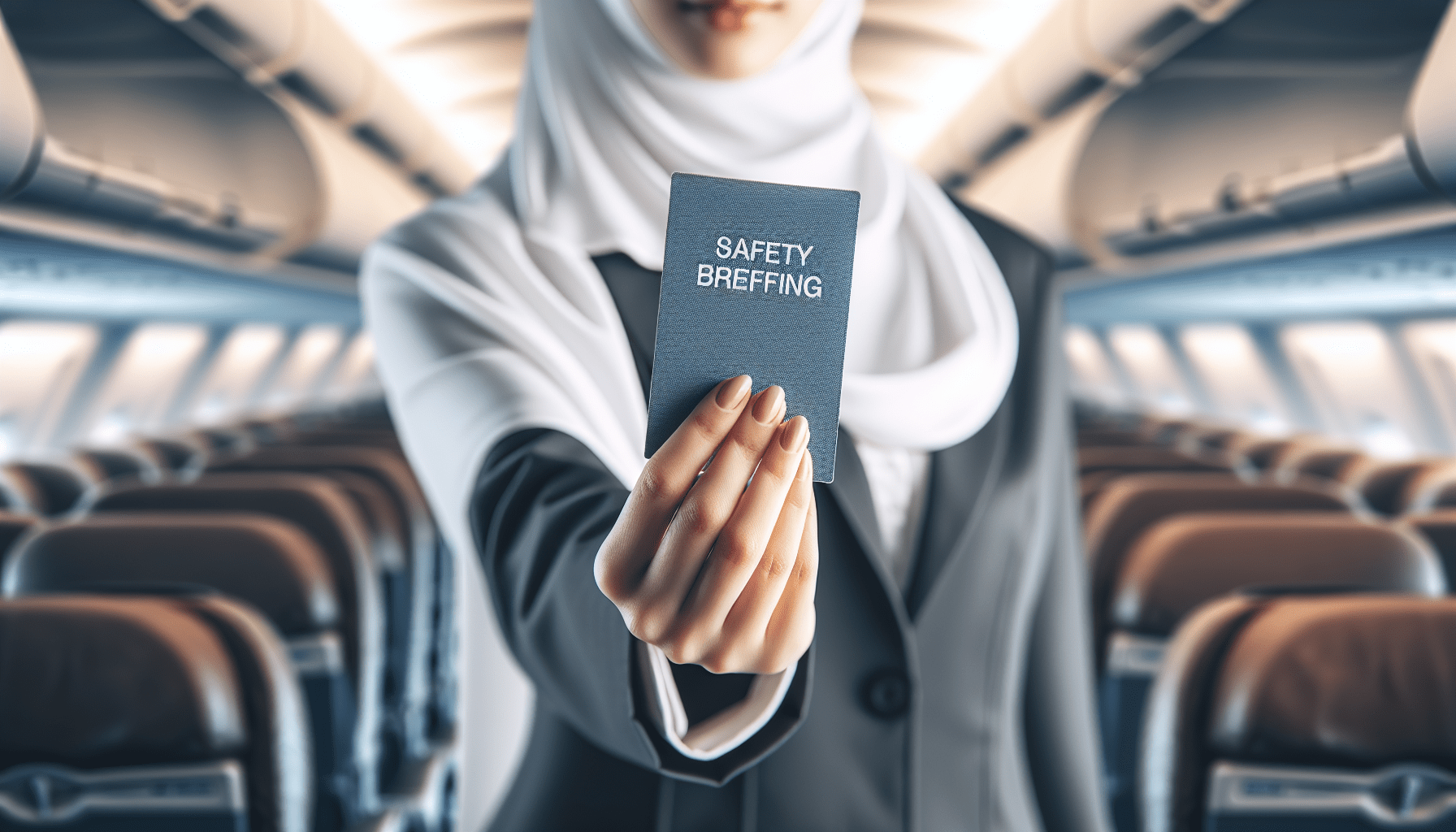EACHY Travel Makeup Bag,Large Capacity Cosmetic Bags for Women,Waterproof Portable Pouch Open Flat Toiletry Bag Make up Organizer with Divider and Handle
$20.39 (as of November 22, 2024 15:26 GMT +00:00 - More infoProduct prices and availability are accurate as of the date/time indicated and are subject to change. Any price and availability information displayed on [relevant Amazon Site(s), as applicable] at the time of purchase will apply to the purchase of this product.)Flying can be an anxiety-inducing experience, with every noise and movement raising concerns about the flight’s safety. To help you distinguish between routine occurrences and real issues, veteran flight attendant Barbi, who has nearly 40 years of experience, shares her insights. Flight attendants are trained to manage situations calmly and keep passengers informed when necessary. Signs like rapid decompression, sudden altitude changes, or unusual noises are rare but worth noting. Barbi reassures that if the crew seems calm, there’s likely no issue. By understanding these signs, you can feel more secure and better prepared for your next flight. Ever wonder what flight attendants are trained to look out for during a flight? Sure, flying can trigger anxiety, especially with unexpected noises or sudden movements. The Hill reported that 40% of Americans experience aviophobia to some degree. To distinguish between routine occurrences and real issues, we spoke with Barbi, a journalist and veteran flight attendant with nearly 40 years of experience with a major U.S. carrier. Here’s the inside scoop on what could mean trouble on an airplane.
Shop These Accessories for a Comfortable Trip
The Role of Flight Attendants in Keeping Calm
Training and Professionalism
Flight attendants are trained to maintain a calm and composed demeanor, even in the face of serious issues. “Crews do their best not to give any indication that there is a serious issue during a flight until we are ready to share it with the passengers,” Barbi explains. The primary goal is to prevent unnecessary panic and manage the situation effectively.
Subtle Hints of Trouble
While professionals do their utmost to keep things under wraps, a few behaviors might hint at something unusual. If you notice flight attendants moving quickly and purposefully to a specific area of the plane or if the crew clearly deviates from regular service without any explanation, it could indicate that they are addressing a non-routine issue.
Recognizing Different Emergency Signs
Rapid Decompression
Rapid decompression is one of the rare but critical emergencies. Barbi describes this scenario vividly: “Rapid decompressions will have loud or booming sounds, a whoosh of air will fill the cabin, debris will fly about, and oxygen masks will drop if you are on a commercial jet with capabilities to fly at high altitudes.” The cabin might also get foggy as temperatures plummet. Despite its dramatic portrayal, this event is extremely rare.
Sudden Changes in Altitude
Significant and sudden changes in altitude usually indicate that pilots are avoiding a problem, such as severe turbulence. This maneuver helps to maintain safety, even though it might feel unsettling.
Unusual Noises
Unfamiliar noises can also be cause for concern. While commercial flights inherently involve some level of background noise, new, unusual, or particularly loud sounds should catch your attention. Check out our guide on different airplane noises and what they mean for more insight.

Shop These Accessories for a Comfortable Trip
What To Do If You Suspect a Problem
Speak Up
Barbi’s advice is straightforward: “If you see something, say something.” Reporting your concerns allows the crew to assess the situation. “It may be nothing, but by bringing it to the attention of the crew, they can discern if it warrants emergency procedures.”
Stay Seated and Follow Instructions
If you notice flight attendants behaving unusually or deviating from normal service, stay seated and wait for further instructions. The crew is trained to manage emergencies and will communicate if any passenger assistance is needed.
Common Misinterpretations
Sometimes passengers misinterpret routine events as serious issues. Turbulence, for example, can be alarming but is generally not dangerous. Pilots, crews, and aircraft are well-equipped to handle it. Similarly, seeing a flight attendant rush down the aisle could simply mean they are retrieving extra supplies for food service.
Final Tips For A Safe and Calm Flight
Observing Crew Behavior
Barbi assures that if the crew appears calm and continues their duties, there’s likely no issue. Always keep your seatbelt fastened when seated to avoid injury during unexpected turbulence.
Health Considerations
“If you are sick, do not fly,” states Barbi. The last thing you need is to be 35,000 feet above the ground, stuck in a metal tube with no way to get to a hospital if things worsen.
By understanding these signs and following these tips, passengers can feel more secure and better prepared to handle their next flight.

Quick Reference Table
| Scenario | What To Look For | What To Do |
|---|---|---|
| Rapid Decompression | Loud booms, whoosh of air, oxygen masks | Follow crew instructions immediately |
| Sudden Changes in Altitude | Noticeable altitude shifts | Remain seated and stay calm |
| Unusual Noises | New or loud sounds | Observe, but don’t panic |
| Flight Attendant Behavior | Quick, purposeful movement, behavior changes | Stay in your seat and await instructions |
| Suspected Medical Emergency | Someone visibly ill or unconscious | Alert flight crew immediately |
Understanding these nuances can help reduce your in-flight anxiety and make you a more informed traveler. Safe travels!
Shop These Accessories for a Comfortable Trip






